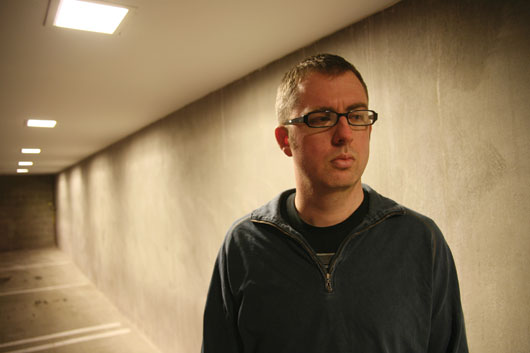Artist Tips: Lusine
Jeff McIlwain (a.k.a. Lusine) is often cited as one of the most versatile producers working […]

Jeff McIlwain (a.k.a. Lusine) is often cited as one of the most versatile producers working in electronic music, and for good reason—who else can make Detroit techno and IDM as consistently well as movie soundtracks? In September, McIlwain returned to Ghostly International for his first album in four years, A Certain Distance, his most accessible effort to date. Featuring the vocals of Vilja Larjosto on several tracks, including the single “Two Dots,” the record’s poppiness is quite a change from the icy ambient whirs of 2007’s Language Barrier. Here, Lusine drops a few tips on novice producers by addressing sample sources and the art of knowing when to say when.
1. Get your sound sources from unusual places.?
If you’re basing all of your sounds on the same sample banks or plug-ins/synths, your music might tend to sound the same. Using field recordings is a great way to build interesting sound banks. I named the third track on my album “Tin Hat” because the initial source was recorded at one of my favorite bars in Seattle, The Tin Hat. I threw this field recording through a vocoder to match the key of the rest of the track.?
2. Not everything can be fixed with EQ.?
If something just doesn’t sound right in the mix, isolate each channel and figure out which track isn’t working. EQing is great to isolate frequencies, but sometimes it’s a matter of replacing a sound or re-sequencing a track. A few of my tracks have vocals, which can get complicated if there’s a lot going on in the background. I realized with “Two Dots” it wasn’t really a matter of tweaking the vocals or the backing tracks, but I had to re-sequence a lot of the tracks to make the vocals, beat, and synth lines not crowd each other out.??
3. Don’t worry about getting the most expensive gear.
?A $2000 soundcard, $5000 synthesizer, or collection of high-end plug-ins is not going to fix your crappy track. And it’s not going to make your amazingly spontaneous and beautiful track sound a million times better; it’s what you do with your equipment that counts. I’ve got a few favorite pieces of gear that I know inside and out. If you know your equipment, then you can focus more on your music.?
?4. Leave any pre-mastering until the end.?
Work more on making the tracks sound better together musically before applying an overall limiter (unless compression is being used as an effect). I will make a pre-master of my music in the end, but I usually give the mastering engineer an unmastered copy. If you’ve been relying on your master channel during production, you might actually be disappointed with how your unmastered copy ends up sounding in the frequency range and dynamics. And the engineers usually have a lot better gear for giving the bass some oomph and the track better overall clarity.??
5. Commit it to tape (so to speak).?
Don’t constantly explore your options if something feels right. I have often lost a bit of the magic by continually re-working a track. Sometimes leaving it for a few days and coming back to it can really help to clue you in on how much you’re feeling it. Conversely, if it just doesn’t sound right, don’t be afraid to totally scrap what you’ve been doing and approach it like a remix. The track “Gravity” was originally intended to be something totally different, but after months of toiling, I decided to start from scratch and take it in a totally new direction.?

